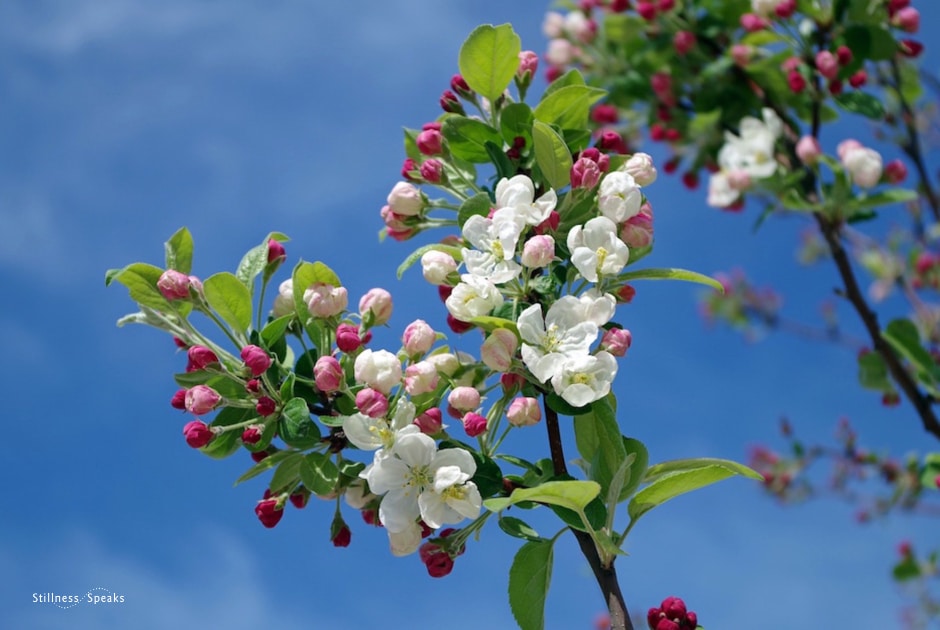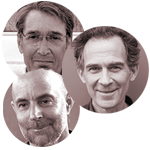“…there is a ripening process that spiritual practices can serve, to bring us to a readiness from which we may more easily open beyond path and ripening and preparation.”
Pir Elias continues his essay on the “Art of Awakening” by exploring this key question: What, then, does it take for a spiritual path to be effective? If you missed it, be sure to read Part 1.
Something is Missing
When we look closely at the function of a spiritual path, including the idea of a seeker on the path and a goal toward which one aspires, we see these phenomena are all emerging from the felt sense that something is missing. I am missing something. My experience of life could be better. I want to be a better person. I want to feel close to God. I want to find the meaning behind this existence. These feelings may draw me to a formal religion or to a spiritual path where I hope to find what is missing—a belief system, an inspiring teacher, a community, or a practice that will assuage my sense of lacking something.
A central element in this view of reality is of course the I-sense: I am missing something. My experience of life could be better. A spiritual path is something that will benefit me. The splitting off into a self-identification as an entity distinct from others and from the world at large is the primal movement of the human psyche. It sets the stage for my experience of lack: something can only be missing if there is a separate me that misses it.
It also delineates in space my sense of separation from what I’m missing: I am here and everything else is out there. The thing I lack must also be out there somewhere. Some teacher or teaching must have the key that I am searching for. I must find it. It is an it, out there.
The sense of distance from what I long for also invites the added separation of time: I hope or expect to find what is missing sometime in the future. A grand event will occur. Salvation or enlightenment will happen. Not now, but sometime. Both these senses of spatial and temporal distance from that which I am missing refer back to and reinforce my experience of I-ness — I am this entity who is lacking this most desired something and who waits for it.
At this point we see how the idea of the perceived need for spiritual effort and discipline is established. I must exert my will and make use of prayer and spiritual practices to one day achieve that which I lack: a calm mind, an open heart, freedom, awakening, God-consciousness, forgiveness, etc. This is what Buddhists call a gaining idea. Again, if we look closely we can see how this dynamic of a gaining idea once again subtly refers back to and reinforces the sense of the separate I. I do this practice. I choose this difficult path. I cause myself to sit here motionless, trying to tame the thoughts and emotions that arise in my awareness.
Looked at through this lens, the consequences of taking on a spiritual path and being a spiritual seeker with a spiritual goal are counterproductive. Instead of releasing the sense of self they reinforce it. Instead of resolving the subject-object duality they employ it. Instead of opening my awareness to the mystery of existence they give me ways to define it.
And yet it would be wrong to dismiss the entire religious and spiritual curriculum of humanity because some of its expressions may entangle us in the very attachments they seek to free us from. Despite the pitfalls described above, spiritual paths can serve a positive function. We see evidence for this in the experiences of illuminated souls throughout history. What, then, does it take for a spiritual path to be effective?
The Art of Awakening
If we we approach the journey of the spiritual path as an art rather than a practice or a discipline, we may avoid the gaining idea that clouds this process. All art requires discipline, yet discipline alone does not produce art. Great art arrives through the artist’s openness to the unknown and the unexpected, in addition to his or her history of practice and developed skills. In the same way there is a ripening process that spiritual practices can serve, to bring us to a readiness from which we may more easily open beyond path and ripening and preparation.
Here again we see the contradiction inherent in the idea of a spiritual path. Teachings and practices are useful to the extent that they prepare us to notice what is already true. When we finally notice “this that is already true,” we realize it’s been here all along, and no preparation was ever necessary to recognize it.
Nevertheless, we can appreciate how all the practices we have used — sitting in silence, repeating mantra, singing zikrs, whirling in circles, praying, visualizing deities, meditating, inquiring into the nature of the self, practicing koans, etc. — plus all the teachings we have been exposed to, can ripen us in two basic ways. First, they can encourage us to consider the possibility that we are not a separate self but the transparent awareness within all being. This is initially an intellectual consideration—we are invited by teachings and practices to relax our assumptions about what is real. We allow for the possibility that things may not be as we had imagined them to be. We allow for the possibility that reality — all of this universe as we know it — is awake. We allow for the possibility that the familiar awareness we experience as the ground of our everyday perception is continuous with the infinite awareness that is the ground of everything.
These kinds of insights tend to expand our capacity to be comfortable with not knowing answers and not needing to know. They help us give up trying to define the world and ourselves. They make room in us for the indefinable.
The second way in which spiritual teachings and practices can serve to ripen us is by helping to clarify the internal stresses of our mental and emotional life. By “clarify” I mean their capacity to help us reduce the speed and volume of thoughts, become aware of habitual patterns of thinking, release attachments and identifications, and open our hearts to simple presence. From this perspective we can see how a path can help create conditions in us and in our lives from which we are more likely to be opened to the transparent presence of awareness.
Through both of these functions — opening us to the possibility of our true nature, and clarifying our mental and emotional environment so that we may be better able to realize that nature — spiritual practices can serve us on our path. As long as they emphasize these two functions they will not mislead us. Teachings and practices must be utterly humble in this regard, recognizing their limits.
It is always tempting to believe that if I apply effort, discipline, and focus I will be transformed and one day achieve awakening. This is the illusion of being a seeker following a path toward a goal. There is simply no I that can apply effort or be transformed. Awakeness is unachievable because it is already the nature of things. We can never do anything to awaken because here it is.
Again, here’s Part 1 of this series …
We are honored to offer this guest post authored by Pir Elias Amidon. It is published here with his gracious permission and is sourced from Open Path/Sufi Way. The text content of this post (without all the images here) was previously published on Open Path/Sufi Way website as The Art of Awakening.
For a brief BIO of Pir Elias, excerpted from the The Open Path /The Sufi Way website, and in lieu of his teacher page on Stillness Speaks, which will be added shortly, see Part 1 of The Art of Awakening.
Images: (all edited and logo added) 1& Featured) Berries Ripening by Kaz 2) Sunrise by JDmcginely, 3) Man Holding by jill111, 4) Apple-blossom by tpsdave, 5) Sky by Iwona_Olczyk. All images are CCO Public Domain.











